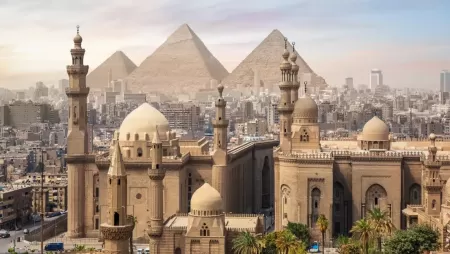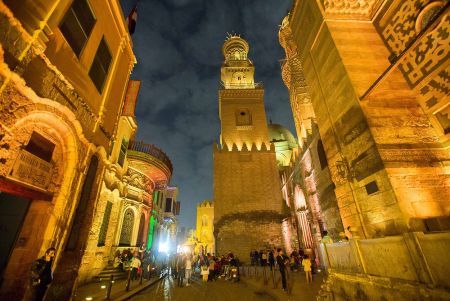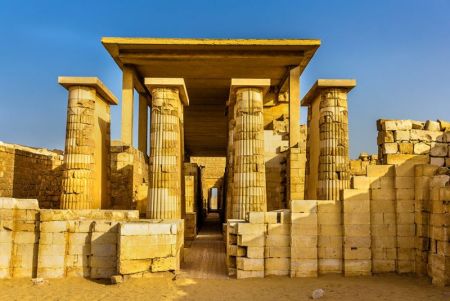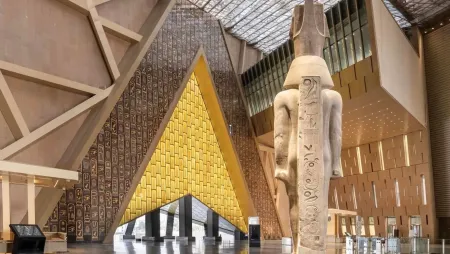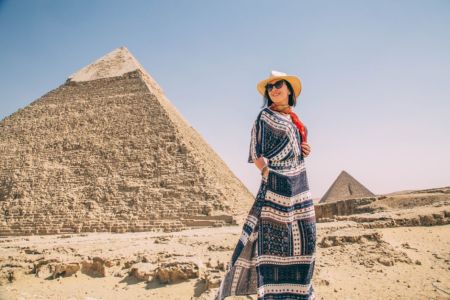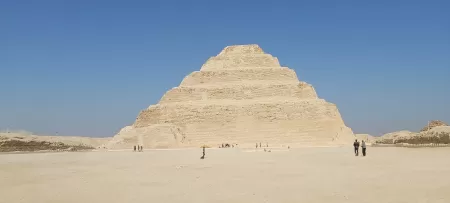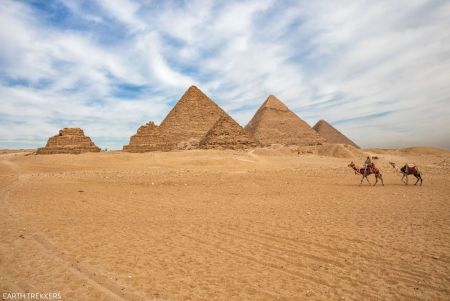Explore the charm of El Moez Street Cairo on an unforgettable Islamic Cairo walking tour. Discover ancient mosques, vibrant bazaars, and rich Egyptian heritage.
Khufu was one of the most famous Pharaohs of ancient Egypt of the Fourth Dynasty of the Old Kingdom. He is particularly well-known for the construction of the Great Pyramid of Giza, which is now considered one of the Seven Wonders of the World.
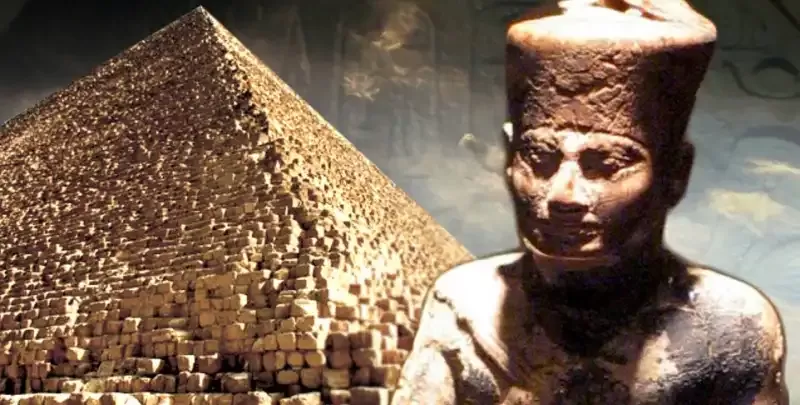
Who is Khufu (King Cheops)
Khufu was the second king of the Fourth Dynasty in ancient Egypt. King Khufu was born in his father's, king Sneferu's, splendid palace in Dahshur, just south of the famous Giza pyramids. At this site, King Sneferu erected two great pyramids; one is the Northern Pyramid or the Red Pyramid. The inscriptions on this pyramid are vermilion and awe-inspiring, thus having earned the pyramid its name.
The command passed over to Khufu after the demise of Sneferu. He took the title of "Khanm Khawaf Li," which means "the protecting deity Khnum." His reign lasted twenty-three years.
Khufu, who is also known as King Cheops, is a great mystery from the old days and flourished in the great heyday of the 4th Dynasty. The truly noble achievement of Khufu stands in the guise of the Great Pyramid of Giza: the eternal manifestation of human audacity. He came to power around 2589 BC and ruled for approximately 23 years. The whole span saw the governing of an age that was a glory of building exploits. Yet none stand equal in the glory to the Great Pyramid; it stands there to inspire awe, having taken twenty years to complete by nearly 100,000 workers all praying alike to the architects and to the builders for a glorious separation from the humdrum life.
In contrast to the mysteries that drape his personal life, the shining stature of Khufu as a pharaoh of supreme magnitude endures. Through the annals of the Old Kingdom, his fame transcends political borders and epochs. A great strategist, his military campaigns broadened Egypt's horizons, paving the way for trading relationships from the Sinai Peninsula to the coasts of the Red Sea, where the Port of Punt was located.
His kingdom was beyond gigantic. Smaller pyramids and temples he scattered amidst the sands, remnants of an era when kings were planners beside architects. He also brought out the solar calendar, breathing life into agricultural cycles and sacred celebrations.
However, history has not relinquished its pages entirely with grandeur; the whispering shadows murmur of voices of those who were kept in an atrocious bond as builders of the Great Pyramid, where history remembers them for pain and sacrifice. It is that great testament, interwoven with Khufu's history, to the indelible spirit of these builders.
Still today, the spirit of Khufu lingers. Hunting a few bark-amphorae from the desert winds are tales in artifacts and monuments, none as flamboyant as the Great Pyramid of Giza, the sentinels whispering to both the wanderer and scholar. As a part of the Cairo day tour, this majestic site gives one a deep experience of the times when monarchs dared to touch the skies and inscribe their names into eternity.
Khufu's accomplishments
Khufu's key achievement was the construction of the Great Pyramid of Giza, the largest and most imposing pyramid in Egypt. Building the Great Pyramid necessitated a massive workforce and required outstanding engineering. An everlasting tribute to this pyramid is modern engineers and scholars standing in awe at the feats of engineering put together by the architects of ancient times.
Apart from his architecture, Khufu is also credited with increasing the bounds of Egypt through his military expeditions and setting up trading relations with neighboring areas. He also fostered the introduction of the solar calendar in Egypt, compelling regularity in agricultural cycles and highly valued religious celebrations.
In general, King Khufu is said to be among the most significant pharaohs of the Old Kingdom era. His reign was marked by striking advancements in building, expansion through military means, and culture.
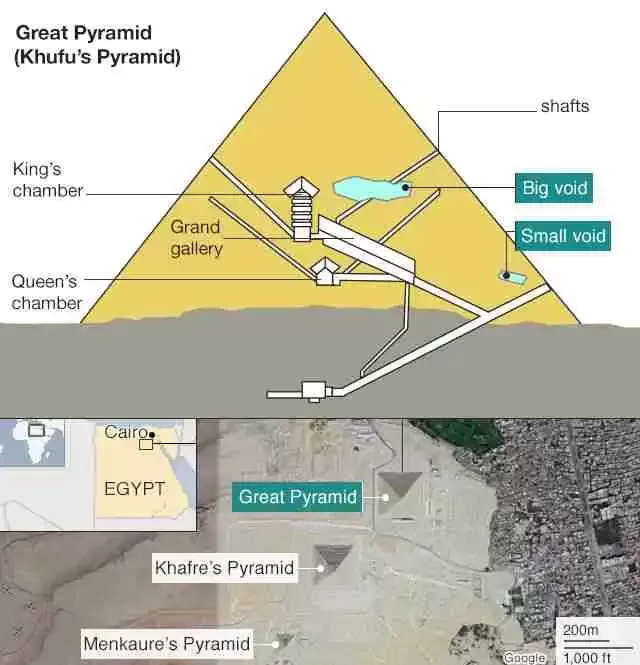
How many stones are in the Great Pyramid of Giza, Khufu?
- The exact number of stones used in the construction of the Pyramid of Khufu (or Great Pyramid, or Cheops' Pyramid) varies depending on the authorities considered. It is estimated that the pyramid consists of some 2.3 million stone blocks, weighing in at an average of 2.5 tons per block. On the high side, the estimates reach up to 2.5 million blocks, but others put it closer to 2 million. Whatever the exact number, constructing the Pyramid of Khufu is considered a feat of engineering and architecture, having turned into one of the most iconic and enduring symbols of ancient Egypt.
- The average weight of the stones used in the Great Pyramid of Khufu (Cheops) is estimated to be around 2.5 tons per block. However, the stones' weights varied depending on their size and location in the pyramid. Some stones weighed as much as 80 tons; lighter ones weighed between 2 to 3 tons. These giant stone blocks lay heavy on history as well as engineering and architecture, since they were cut and placed with such precision due to highly advanced engineering techniques and construction knowledge gained by the Egyptians in their age.
How tall is the Pyramid of Khufu?
The Pyramid of Khufu (otherwise known as the Great Pyramid or King Cheops' Pyramid) measures approximately 147 meters (or 481 feet). It stood as the tallest ideated structure for more than three thousand eight hundred years until the Lincoln Cathedral in England was built in the fourteenth century AD. The Pyramid of Khufu is still among the largest and most magnificent structures ever erected by man, and the attention of curious minds from around the globe still focuses on it.
How was the Pyramid of khufu constructed?
The construction of the Great Pyramid of Khufu remains one of the greatest engineering feats in all antiquity. Although the exact means by which the pyramid was constructed are not yet fully established, scholars presume that construction considered a mixture of techniques and technologies:
Quarrying: Stones used to build the pyramid were quarried, mostly limestone, from nearby quarries; once cut, they were transported to the pyramid site by boat along the Nile.
Ramp system: This was perhaps the most important system for engineering; huge stones would have been dragged up ramps to the build site. The ramps would have been built from mud bricks and laid at an angle that workers could negotiate.
Lifting: After the blocks reached the construction site, they were put into place with great difficulty, using a combination of levers, pulleys, and ropes. Some think that counterweights could maybe even have been used to assist in lifting the heavier stones.
Precision cutting: The stones in the pyramid are said to have been cut so precisely together that not an edge of a knife fit between them. With copper tools and abrasive sand, workers cut the stones, polishing them pairwise with smooth stones.
Internal structure: The interior of the pyramid has an intricate system of passages, chambers, and tunnels that were built with techniques like the outer casing.
- From the amazing calculations, the ratio of the circumference of the Great Pyramid divided by the height of the pyramid equals 3.14; in the chambers of King Khufu Pharaoh, the ratio is 3.14; the sarcophagus of the king is also 3.14. This is no accident in design and engineering; this is also the secret of the pharaohs.
- The unit of measurement within the pyramid is the hierarchical inch; it turns out that it equals approximately the English inch.
- The location of the Great Pyramid is exactly halfway between the five continents.
- The front side of the Great Pyramid is oriented to the main directions (North-South-East-West), not any north, especially not the magnetic north and let's say, the geographical north, which uncovers the secret of this design.
- The entrance passage to the Great Pyramid refers to the Polar Star, while the inner anteroom refers to Sirius, which are types of stars in the sky, raising the question of whether the Great Pyramid is an observatory.
- The limestone casing of the Great Pyramid is exceedingly beautiful; however, the earthquake in 1301 caused the great majority of this casing to fall, and the rest was stolen and used for other constructions, such as temples, mosques, and homes.
Overall, the construction of the Pyramid of Khufu was a great undertaking involving tens of thousands of workers over a span of some decades. The construction of the pyramid stands as one of the earliest testaments of precision engineering amidst great challenges-the finest of art and genius of the ancient Egyptians. At the time of planning the Egypt tour, one can gaze upon the Great Pyramid and reflect on ancient engineering marvels that define Egypt's Old Kingdom.
Book Your Egypt Vacations Now
With its unique ancient history, historical artifacts, cultural adventures, and countless activities, the Giza Pyramids is the best place to explore the Ancient Egyptian Civilization. To experience everything Egypt has to offer, you can browse our Egypt travel packages and Nile cruises. Book with us and get the chance to witness all the beauty of the ancient Egyptian treasures.

